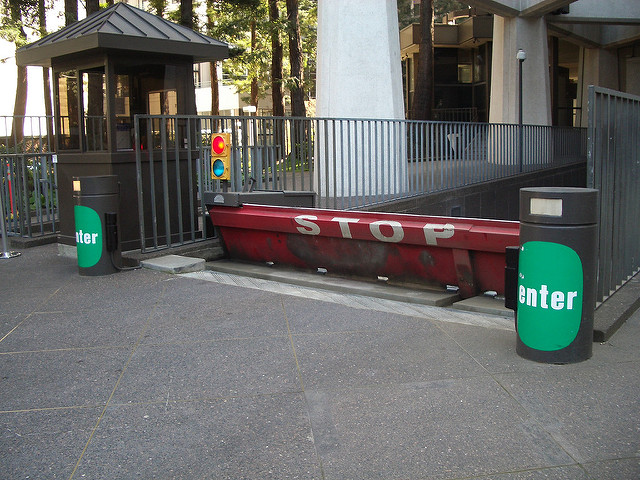
Appreciating Real Ambiguity
Ambiguity can make us uncomfortable. We appreciate people who are clear and straight forward, and do not trust too much complexity.
It is more comfortable for us when we think we know where we stand. We appreciate it when expectations and standards are clear and easy to understand. Do not expect me to do what you expect me to do if you cannot explain it to me.
Ambiguity seems to be full of opportunities for misunderstanding and confusion.
When things get too complicated they feel ambiguous, more difficult to nail down. It is a challenge for us to get a good handle on vague, indistinct ideas. We like to have a place for everything and everything in its place, especially when we are leading.
We tend to see people, and situations, which are ambiguous as potential problems.
Some of us think of leadership as like conducting an orchestra. Each performer, each section, plays its part flawlessly as we point at people and give cues. We see leadership as making sure each person we are leading does expect we want them to do.
Many of us experience ambiguity as the enemy of leadership.
We want a clear picture, not really subject to individual interpretation. Being ambiguous often means people head off in their own directions. We believe our leadership should hold people together.
It is almost as if we would prefer people to march together rather than dancing.
My understanding of ambiguity is different.
In my experience, ambiguity is part of life, life in general and everyday life.
Ambiguous situations are when we need to take initiative and communicate effectively.
The Benefits of Ambiguity?
If we see ambiguity as more of an opportunity than an inconvenience, we can appreciate it.
I understand the benefits of clarity and specificity. There are times when we work hard to be as clear and specific as we can be. We want to do what we can to make ourselves understood. I can become frustrated, and skeptical, with people who appear to be ambiguous on purpose.
Even as we struggle to be a clear as we can, ambiguity is part of life. We struggle to translate what is in our minds and our hearts into words. Words, with all their shading and nuance, are understood differently by different people.
Part of the power of words is their ambiguity. They are open to interpretation and different meanings. What I meant to say is often unlikely to be what you hear, or remember. The meaning you hear may be an improvement on what I intended to communicate.
Ambiguity helps us find what we might have overlooked.
One of the benefits of real ambiguity is its openness to new insights. We discover new, creative ways of thinking by exploring real ambiguity. Each of us has more ways to contribute when we are appreciating real ambiguity.
Ambiguity gives us more freedom.
I have worked with groups of people who felt constrained and limited without enough ambiguity. Making things less specific gave them an opportunity to breathe and do their best work.
Leadership is practicing the balance between ambiguity and giving orders. We bring out the best in the people around us as we give them enough ambiguity.
Leading like a monk can help us find that balance for ourselves.
Real Ambiguity in Monastic Life
Many of us view monks as role models of calm and mindful assurance. If we have met monks, we might marvel at their peaceful, unflappable openness. Most people who visit monasteries have an expectation of quiet, even silent, composure.
We often assume monks have found answers which satisfy them on their quests. We perceive monks as holding fast to certain truths they have discovered.
I have seen another side of things as I have gotten to know monks and become more monastic myself.
It may be true that monastic life helps people find new answers. For me the power of monastic life is helping us see old truths in new ways. It is not that life is more certain, more resolved. Monastic life shows us how to appreciate life’s ambiguity.
The monks I know, and my time at monasteries, help me appreciate truths more deeply.
It is easy to assume our lives are about sorting things out and resolving our own minds. We may believe that as we gain experience, we will find answers to our questions. Our expectation may be we will become more certain as we get older.
Monastic practices open my eyes to possibilities yet to be explored.
We like to fool ourselves into thinking we can only trust what our physical senses tell us. It may be we want to believe only what we can see and hear, touch and smell, and taste. The fact is we allow ourselves to be distracted by what is on the surface.
Life is deeper and more ambiguous than our physical experiences. Monastic life can show us how not to be afraid, not to be distracted.
We learn to begin appreciating real ambiguity.
Practicing Appreciation for Real Ambiguity
It may be good for us to start slowly and grow into appreciating real ambiguity.
First, we can begin to see ambiguity as an opportunity rather than a challenge. Ambiguous situations allow us to use our freedom and discretion, and take initiative.
Second, ambiguity is normal. As hard as we might try to be specific and clear, words convey various meanings. It is a significant challenge to lead without ambiguity.
It is almost as if being ambiguous is designed into how we communicate with people.
Since life has an element of ambiguity, we can work with it rather than against it.
If ambiguity is a normal part of life, why not use it to our advantage?
Why not give people, and ourselves, the benefit of appreciating real ambiguity?
Appreciating real ambiguity is one of the differences between leading and just telling people what to do.
How are we appreciating real ambiguity in our lives?
When will we appreciate ambiguity in new ways today?
[Image by Digital Sextant]
Greg Richardson is a spiritual life mentor and leadership coach in Southern California. He is a recovering attorney and university professor, and a lay Oblate with New Camaldoli Hermitage near Big Sur, California. Greg’s website is StrategicMonk.com, and his email address is [email protected].












